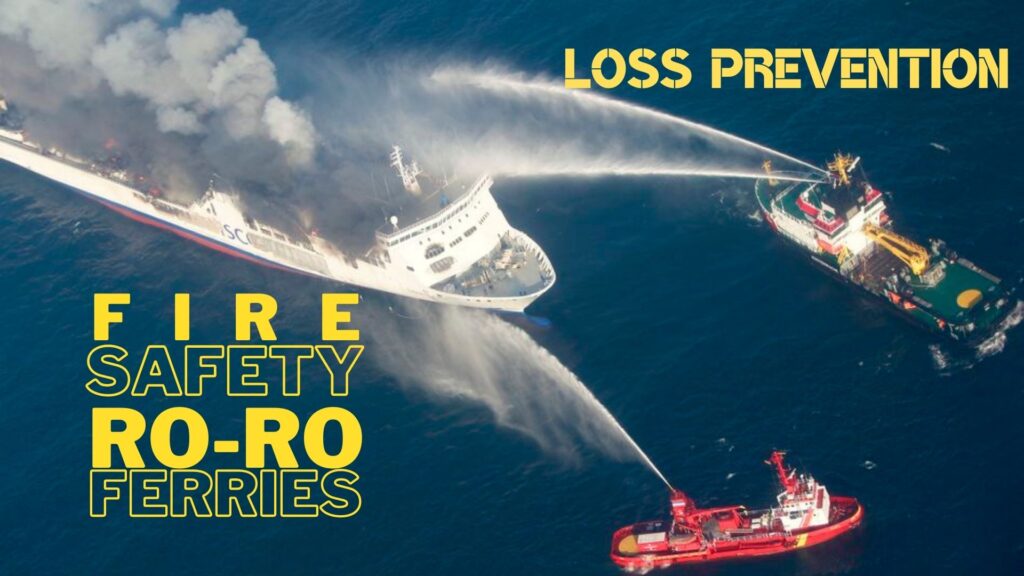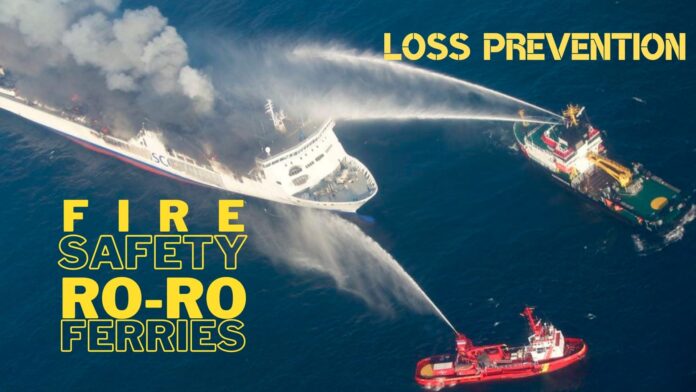
(www.MaritimeCyprus.com) A fire is one of the most frightening things that can happen at sea. Often, seafarers have no ready access to shore emergency services when a fire breaks out and will need to rely on their own resources, courage and training to tackle and extinguish the blaze quickly to ensure the safety of the ship and everyone on board.
There were many incidents of fire onboard ships in the past.
Ferries have particular risks from the cargo they carry… cars, lorries and refrigerated containers, all of these have combustible material and their own fire hazards, something which a ship’s crew cannot easily control.
Even though great attention is paid to fire safety during ferry design and construction, fires can and do occur and when they do, they can spread very quickly. It is therefore vitally important that ships’ crews react quickly to the early signs of any fire and use all available equipment and methodologies in the most efficient and effective way.
To do this, ships’ crews need to have a thorough understanding of the use and limitations of the fire detection/extinguishing equipment available to them as well as a good knowledge of how these should be used.
Fire safety is one of the first topics discussed during pre-sea induction training, when basics are taught: raising the alarm, closing fire doors and using portable fire extinguishers. Later, crew attend firefighting courses and, when on board, regular fire drills are held.
Accidents investigated by investigation bodies have shown that, even after significant training and drills, ships’ crews are not always experienced firefighters and mistakes made with basic fire awareness/safety have caused or contributed to their failure to successfully contain or extinguish a fire.
This guide has been written to raise awareness of the likely fire risks on ferries, to improve crew knowledge of fire safety and to discuss lessons learned from the accident investigation.
The guide is not a firefighting training manual but it is a practical guide on basic fire science, discussing the causes and prevention of fires, best practice in fire safety, strengths and weaknesses of fire safety in ferry design and firefighting equipment.
And, most importantly, what a ship’s crew can do to prevent ship loss through fire.
The below guides are recommended to all who have an interest in fire prevention on board ship.
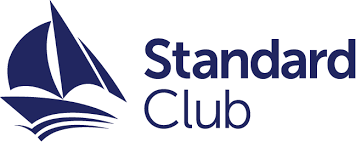 The Standard Club has issued a Master’s Guide to Fire Safety on Ferries sets out to promote best practice in fire safety, to raise awareness of fire risks in general and fire risk on ferries in particular.
The Standard Club has issued a Master’s Guide to Fire Safety on Ferries sets out to promote best practice in fire safety, to raise awareness of fire risks in general and fire risk on ferries in particular.
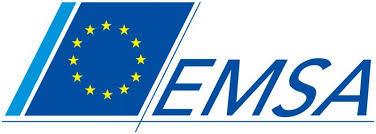 European Maritime Safety Agency (EMSA) commissioned a study which investigates risk control options (RCOs) for mitigating the risk from fires on ro-ro decks. The first part considers RCOs in relation to Electrical Fire as ignition risk and the second part considers RCOs to mitigate the risk of Fire Extinguishing Failure. With regards to extinguishing failure the focus has been on failure of drencher systems (as requested by the tender specifications). Both fire extinguishing and fire suppression have been analysed. The study considers both newbuildings and existing passenger ships, and has been done per the instructions and limitations put forward by EMSA. The Study can be downloaded at the bottom of this article.
European Maritime Safety Agency (EMSA) commissioned a study which investigates risk control options (RCOs) for mitigating the risk from fires on ro-ro decks. The first part considers RCOs in relation to Electrical Fire as ignition risk and the second part considers RCOs to mitigate the risk of Fire Extinguishing Failure. With regards to extinguishing failure the focus has been on failure of drencher systems (as requested by the tender specifications). Both fire extinguishing and fire suppression have been analysed. The study considers both newbuildings and existing passenger ships, and has been done per the instructions and limitations put forward by EMSA. The Study can be downloaded at the bottom of this article.
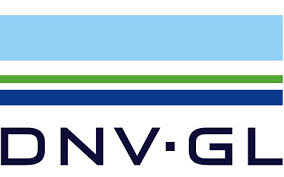 In addition, DNVGL has issued a report on fire incidents in Ro-Ro spaces to address growing safety concerns in this segment and provide guidance to shipowners. DNV GL’s “Fires on Ro-Ro decks†has examined fires within Ro-Ro spaces on Ro-Pax vessels, vehicle carriers and general Ro-Ro cargo vessels and has identified 35 such fires between 2005 and 2016. A previous DNV GL paper on Ro-Ro fires, published in 2005, had counted 25 fires in Ro-Ro spaces between 1990 and 2003. This report can be downloaded at the bottom of this article.
In addition, DNVGL has issued a report on fire incidents in Ro-Ro spaces to address growing safety concerns in this segment and provide guidance to shipowners. DNV GL’s “Fires on Ro-Ro decks†has examined fires within Ro-Ro spaces on Ro-Pax vessels, vehicle carriers and general Ro-Ro cargo vessels and has identified 35 such fires between 2005 and 2016. A previous DNV GL paper on Ro-Ro fires, published in 2005, had counted 25 fires in Ro-Ro spaces between 1990 and 2003. This report can be downloaded at the bottom of this article.
 Lastly, North P&I Club has published a new loss prevention briefing on how to prevent, detect and fight fires on roll-on-roll-off (ro-ro) vessels and car carriers. Such vessels are twice as likely to catch fire as other ships and vehicle-deck fires are notoriously difficult to contain and put out. The new 10-page briefing, which is free to download from the Club’s website, explains the risks of ro-ro and car carrier fires in detail. It then sets out a comprehensive series of recommendations covering training, maintenance, vigilance, reaction and procedures. This LP briefing can be downloaded at the bottom of this article.
Lastly, North P&I Club has published a new loss prevention briefing on how to prevent, detect and fight fires on roll-on-roll-off (ro-ro) vessels and car carriers. Such vessels are twice as likely to catch fire as other ships and vehicle-deck fires are notoriously difficult to contain and put out. The new 10-page briefing, which is free to download from the Club’s website, explains the risks of ro-ro and car carrier fires in detail. It then sets out a comprehensive series of recommendations covering training, maintenance, vigilance, reaction and procedures. This LP briefing can be downloaded at the bottom of this article.
Downloadable Guidance papers:
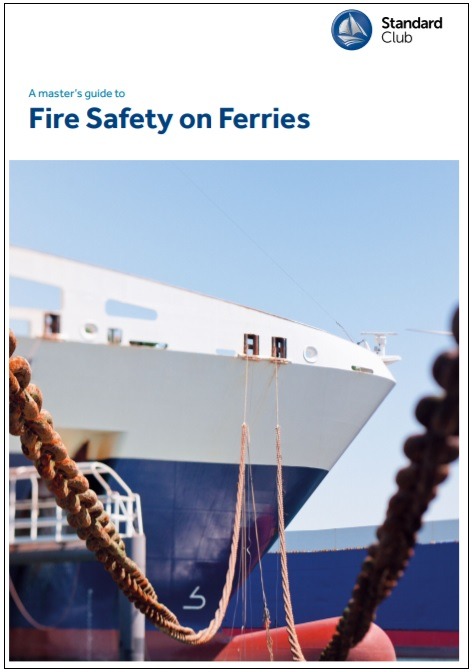
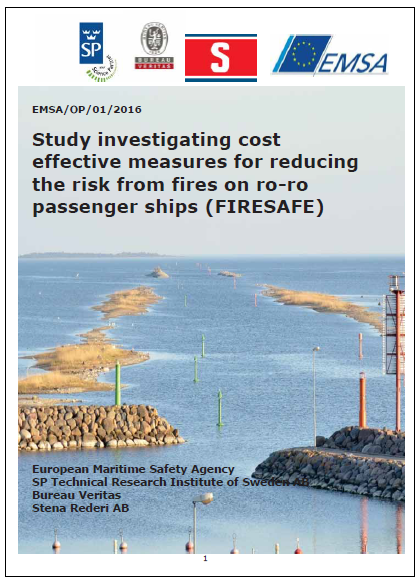
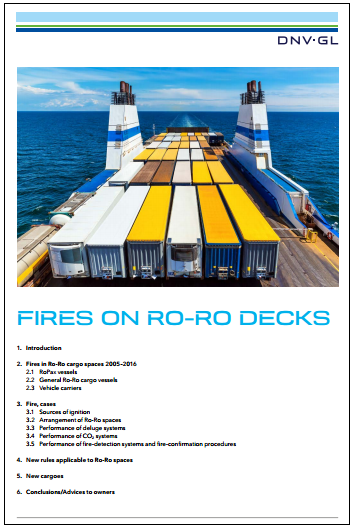
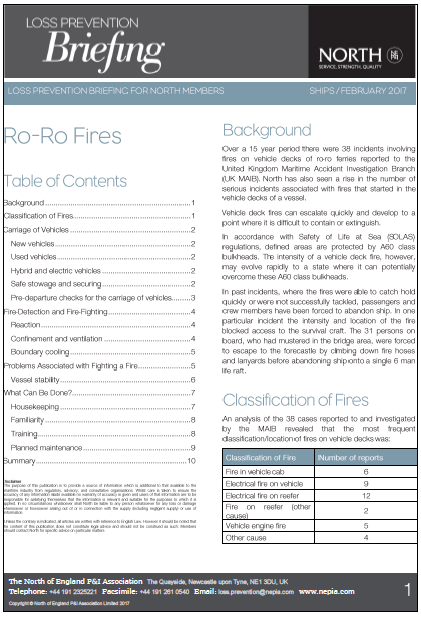



![]()
For more Guides, Resources and Investigation Reports on shipboard fire CLICK HERE





